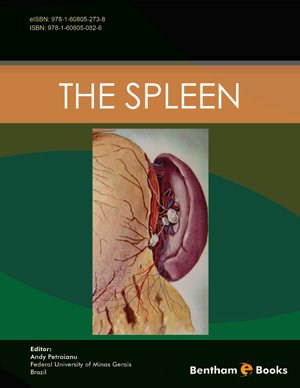Abstract
The portal system includes all veins that carry blood from the abdominal part of the gut, pancreas, gall bladder, and spleen. Portal vein (5-8 cm long) is formed in front of the head of pancreas by the union of superior mesentric and splenic veins, and enters the liver at the porta hepatis in two main branches that have segmental intrahepatic distribution accompanying the hepatic artery and biliary ducts. Portal pressure, like any pressure, is determined by flow rate and resistance. The normal portal pressure and flow are 5 to 7 mm Hg (7-10 cm H2O) and 1000 to 1200 ml/min respectively. Both the increased resistance to portal blood flow (backward component) and the increased splanchnic blood flow (forward component) play major causative roles in the development of portal hypertension (PHT). Portal blood flow can be obstructed before (prehepatic), inside (intrahepatic), or after (posthepatic) the liver. Clinically most important are esophageal varices which are the major causes of morbidity and mortality due bleeding. Many of the mechanisms leading to an enlarged spleen may overlap or coexist in the same condition and in the same patient (infection with congestion with hyperfunction). Splenomegaly is the most important sign of PHT. Thrombosis of the splenic vein increases the venous pressure distal to the obstruction, which leads to left-sided PHT and development of collateral vessels to shunt blood around the occluded splenic vein. Collateral circulation may develop along three pathways. A finding of isolated gastric varices on upper gastrointestinal endoscopy should lead to an evaluation for PHT. Most often is the treatment of the primary disease.






















